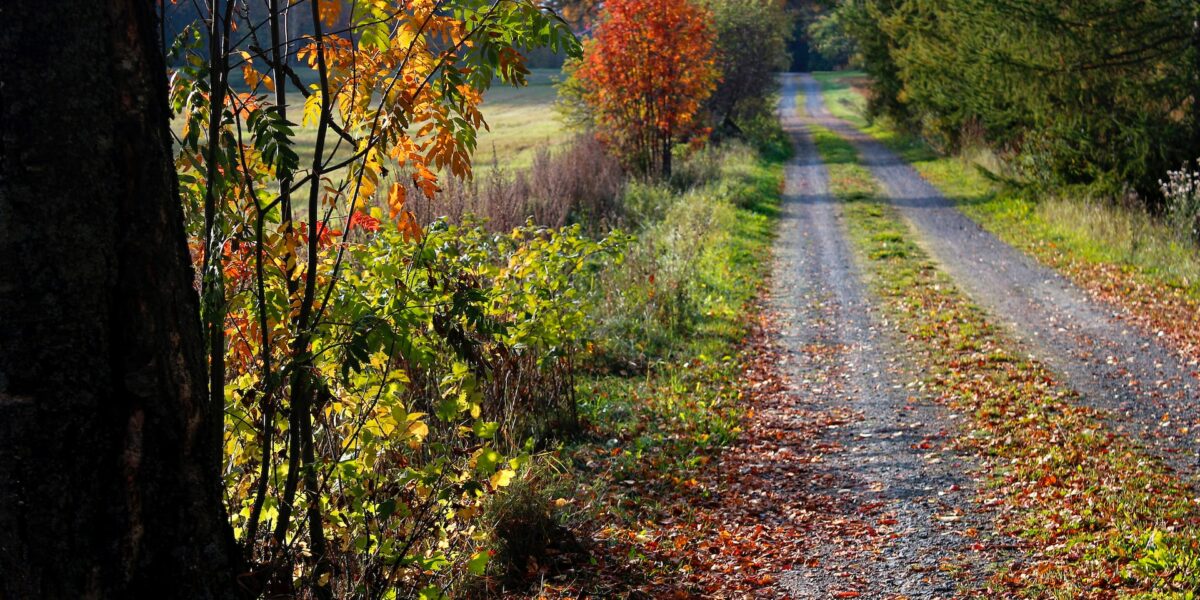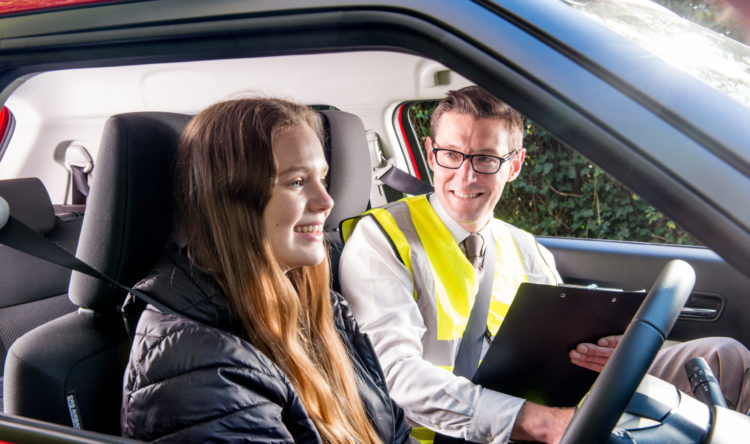Rural nightmare
Country roads remain a major road safety issue
Analysis reveals that there are 70% more deaths on countryside roads than on urban highways.
NFU Mutual, the Department for Transport (DfT) and vulnerable road user groups are renewing calls to respect rural roads and reduce annual toll.
The facts and figures
Research looked at the official figures from the UK’s leading rural insurer, NFU Mutual. They show that rural roads remain significantly more deadly than urban roads despite less vulnerable people using them, such as school children and pensioners walking.
In 2021, there were 70% more fatalities on rural roads (981) than urban roads (576). This is despite rural roads seeing more than a third (35%) fewer vehicles in any given 24-hour period.
NFU Mutual runs its ‘Rural Road Safety’ campaign. This is supported by the DfT, British Cycling and the British Horse Society, and aims to raise awareness of the unique hazards of rural roads and support all road users to reduce road casualties.
Round the corner
There were 10,471 fatalities or serious injuries on rural roads in 2021. This represents an increase of over 1,000 (12%) from the 2020 figure. Within this, the number of people who lost their lives on rural roads in 2021 increased by 7% to 981. It is more than two-thirds higher than the number of people killed on urban roads during the same period.
However, traffic levels are far lower on a typical stretch of rural road. Just 11,700 vehicles in a 24-hour period, 35% fewer than urban roads, which saw 18,100 per day during 2021.
“These latest figures confirm our fears,” says Jade Devlin, Rural Roads Specialist at NFU Mutual. An increase in rural road traffic has led to more deaths, “with vulnerable road users generally bearing the brunt of it”.
“NFU Mutual analysis also shows that in the past four years, over 4,000 people have been killed on rural roads, compared to nearly 2,500 on urban roads.
“Rural roads are a lifeline to many isolated people and a shared space for the entire population, so this is a national tragedy”.
The same but different
After the strict pandemic lockdowns of 2020, Department for Transport (DfT) data shows that traffic returned to higher levels last year. In 2021, there were 132.6 billion vehicle miles on rural roads, up from 118.6 billion in 2020. This is still below the level of 2019, when there were 151.5 billion vehicle miles on rural roads. The number of cars, motorcycles and pedestrians on rural roads all increased compared to 2020.
Motorcyclists completed 1 billion miles on rural roads in 2021, an increase of 100 million on the previous year. Sadly, this was accompanied by 225 motorcyclist deaths on rural roads in 2021 – almost one quarter (22%) more fatalities than 2020. With casualties also increasing, one motorcyclist lost their life every 4.4 million miles driven in 2021, with a serious injury every 430,000 miles.
Two feet
Pedestrian fatalities on rural roads also increased by 15% in 2021, with casualties up by 13%. On average, more than two pedestrians lost their lives in the countryside each week in 2021 as traffic levels grew.
There were also 8% more (509) rural road fatalities for car drivers and their passengers.
However, despite the cycling boom in lockdown, the number of miles ridden by cyclists in the countryside decreased by 23% in 2021. This has dropped to 1.37 billion miles from 1.78 billion miles in 2020, resulting in a 33% reduction in cyclist deaths on rural roads. Despite this, last year still saw more than one cyclist lose their life each week on rural roads.
Behind the wheel
NFU Mutual conducted an online poll of motorists to get their views rural road safety.
Almost a quarter (23%) of respondents said they had been involved in a collision or crash on a rural road.
The greatest concern (36%) is other drivers, with another 36% expressing concerns surrounding vulnerable road users like walkers, cyclists and horse riders. Winding and narrow roads were a big issue for 18%, whilst agricultural vehicles represent the greatest concern for 10% of drivers.
To tackle the issue of rural road safety, 36% of respondents wanted to see reduced speed limits on countryside roads. More driver education for drivers is suggested by 20%, whilst 16% want this for rural dwellers to understand the dangers on their doorstep.
The stats
By distance travelled, vulnerable road users such as cyclists, motorcyclists and pedestrians are disproportionately likely to be killed or seriously injured on rural roads, when compared to car drivers and their passengers (see table below).
| Road User | Number of rural miles travelled (bn) | Miles per casualty | Miles per fatality |
| Motorcyclist | 1 | 430k | 4.4m |
| Cyclist | 1.37 | 1.3m | 23m |
| Pedestrian | 2.25 | 1.3m | 18m |
| Car and Taxi | 98.1 | 18m | 190m |
NFU Mutual claims experts have shared the factors which contribute to accidents on rural, many of which are unique to rural roads, including:
- Vehicles travelling at high speeds resulting in head-on collisions
- A loss of control at unanticipated tight corners, often due to excessive speed
- Unmarked junctions or hidden entrances
- Weather conditions, such as icy roads, water, or low glare form the sun
- Increased traffic from rural businesses – collisions between agricultural vehicles and third parties are 42% more likely during the summer harvest season, for example
Rein in danger
Horse riders are another vulnerable road user frequently seen in rural areas. According to the British Horse Society, there were 2,943 road incidents involving horses in 2021 – an increase of over 200% from 2020. Since 2010, 44 horse riders have lost their lives and 1453 have been injured. Over 500 horses have lost their lives in the same period.
In January 2022, the Highway Code was amended to introduce a ‘hierarchy of road users’ where the greatest responsibility for protecting road users lies with those most likely to cause damage. The change also brought in rules to give vulnerable road users such as cyclists, horse riders, pedestrians and motorcyclists greater protection from motorists.
“Rural roads are becoming more challenging for horse riders,” states Alan Hiscox, Director of Safety at the British Horse Society. “In 2021 at least one horse was killed every week on UK roads”.
“While most riders would prefer not to ride on roads, but the lack of off-road access means using rural roads has become a necessity. ”
“To ensure their safety, and in line with the Highway Code changes, drivers should slow down to a maximum of 10mph when they see a horse on the road. Be patient, not sounding their horn or revving the engine, overtaking only when it’s safe to do so, and leaving at least two metres width if possible.”
Two wheels
Cyclist remain a vulnerable group on our roads, especially rural roads. As we are encouraged to be active, cycling continues to be a popular way forward. This is especially true with the increase in electric bike sales.
British Cycling are big supporters of this campaign. Policy Manager, Nick Chamberlin, says “rural roads remain one of the UK’s greatest assets”.
“These precious rights of way have to be shared but it is vitally important that people cycling, walking or riding can enjoy them without fear.”
He is calling on Government Ministers to “look very seriously at ways to make our rural roads safer for everyone who uses them.”
The campaign’s statements
The Rural Road Safety campaign believes improvement can happens if everyone ‘respects’…
- And understands the needs of all rural road users and makes safety their top priority
- The hazards from the design and conditions on rural roads and behaves with caution
- As well as follows the rules and advice on how to use rural roads safely to help reduce fatalities and injuries
NFU Mutual has the following guidance to help make everyone safer when they use rural roads:
- Rural roads are often narrow, have tight bends and the national speed limit applies over many stretches. Drivers should slow down and approach travelling on rural roads with great caution, particularly if they do most of their motoring in urban environments
- Pedestrians, cyclists, and horse riders are vulnerable road users. Drivers and motorcyclists should slow down and give them plenty of space and only overtake when it is absolutely safe to do so. Impatience can kill so if you are uncertain if it’s safe to overtake, don’t risk it, just wait
- Motorcyclists and drivers should reduce their speed, often significantly, to safely negotiate tight bends and show considerable caution at junctions before pulling out
- Cyclists should show caution and slow down at tight bends and watch out for poor road conditions including potholes and other problems caused by rain and ice which can make cycling more hazardous
- Pedestrians, runners and recreational walkers should try and use the pavement whenever possible, but if being in the road is the only option, make sure you are facing oncoming traffic and it may be safer to cross well before a sharp right-hand bend so you can be seen more easily
- Some safety challenges are more likely on rural roads than urban such as the presence of wild animals, a low setting sun and mud on the road which can freeze in the winter, so staying alert for unexpected risks is important
- All rural road users should follow the legal requirements and rules of the Highway Code – which was updated in January 2022 – and understand how they apply to you and other rural road users.
The problems
The factors which contribute to accidents on rural:
- Vehicles travelling at high speeds resulting in head-on collisions
- A loss of control at unanticipated tight corners, often due to excessive speed
- Unmarked junctions or hidden entrances
- Weather conditions, such as icy roads, water, or low glare form the sun
- Increased traffic from rural businesses – collisions between agricultural vehicles and third parties are 42% more likely during the summer harvest season, for example
More on NFU Mutual Rural Road Safety campaign can be found here.







